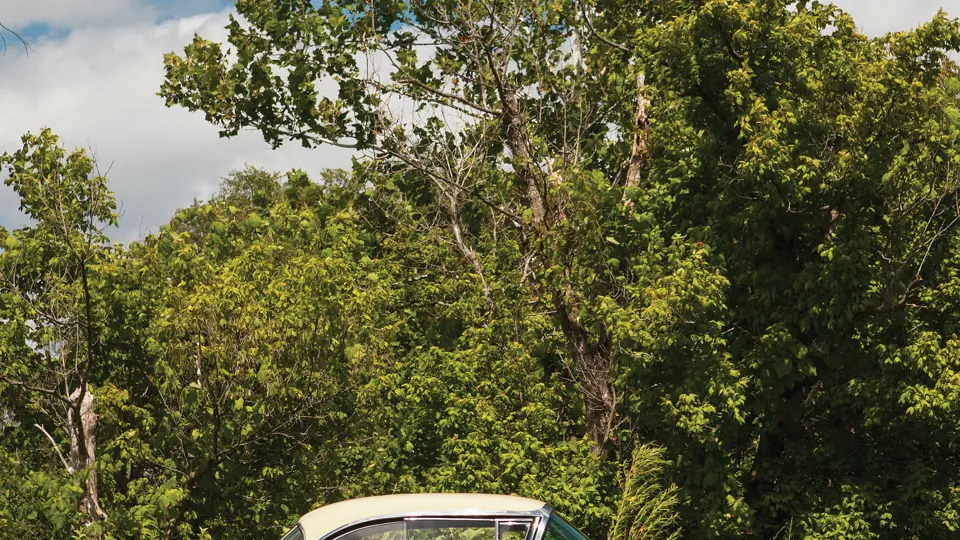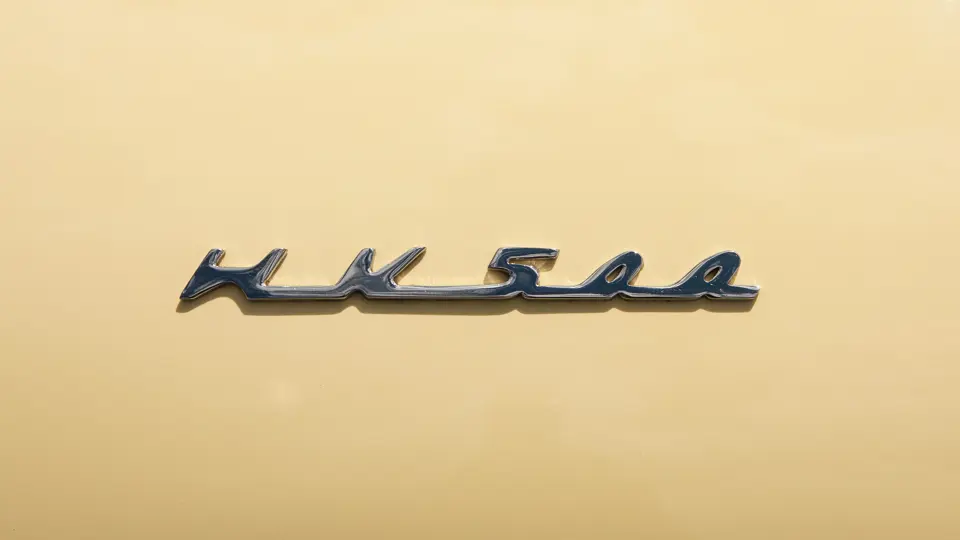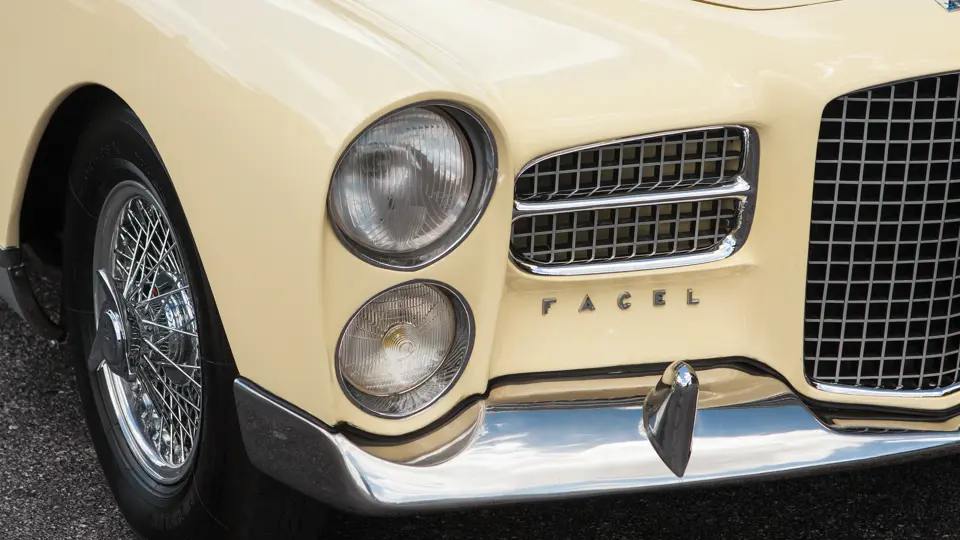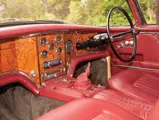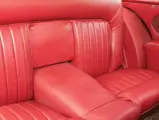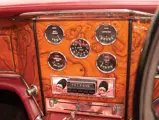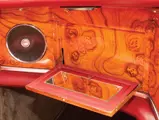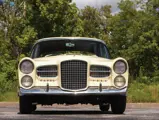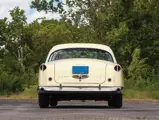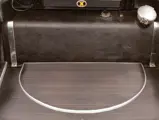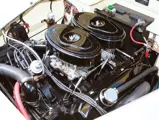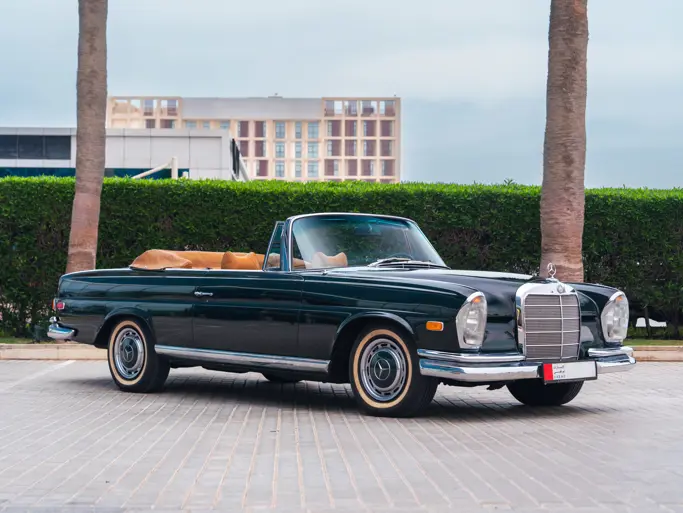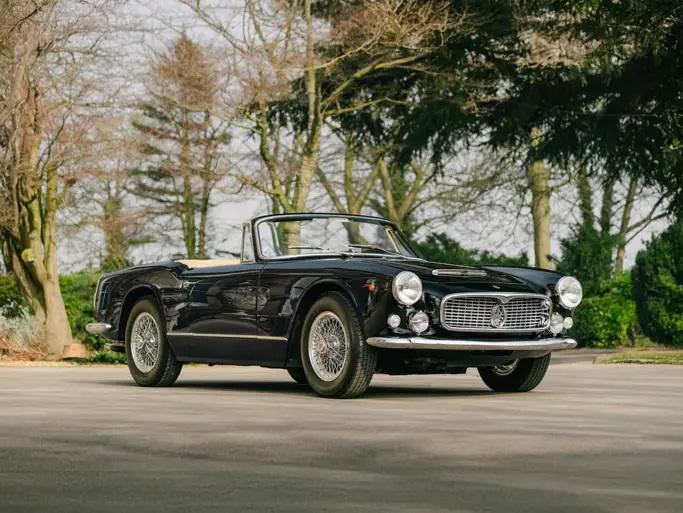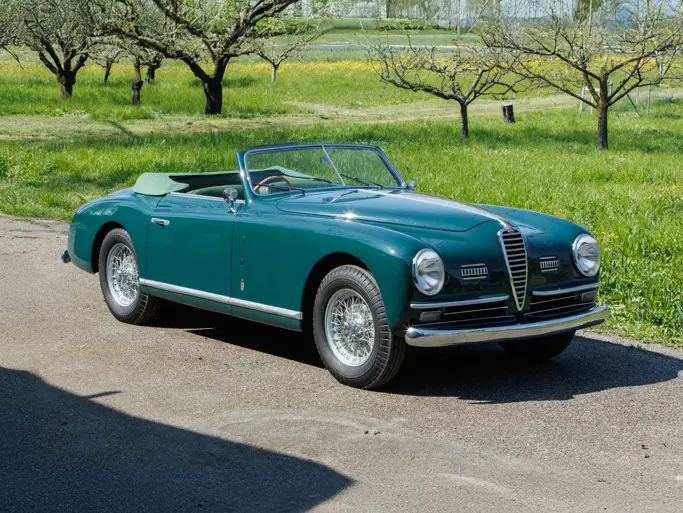360 bhp, 6,279 cc OHV V-8 engine, four-speed manual gearbox, coil-spring independent front suspension, live rear axle with semi-elliptic leaf springs, and four-wheel hydraulic disc brakes. Wheelbase: 2,667 mm
One could hardly find a car more cosmopolitan than this Franco-American Coupé, which was delivered new to a British peer. This right-hand-drive 1959 Facel Vega HK500 was delivered new to Arthur Christopher John Soames, a British politician and the son-in-law to Winston Churchill.
The Facel Vega, of course, was the brainchild of Jean Daninos, a Parisian-born engineer of Greek ancestry. He worked for Citroën in body engineering and as the head of special vehicles, but he left after the Michelin takeover. He founded Métallon, a fabricator of kitchen cabinets and sinks, and in 1939, he established Forges et Atéliers de Construction d’Eure-et-Loire, or FACEL for short. The two firms combined and made aero engines during World War II.
After the war, Facel-Métallon produced bodies for the Dyna Panhard, the Simca, and Ford of France’s Cométe Coupé. In 1954, Daninos decided to try his hand at a complete car. He mounted a Chrysler Hemi V-8 engine on a tubular chassis frame with box-section cross-members, and he used either Chrysler’s Powerflite automatic gearbox or the French Pont-a-Mousson fully synchronised four-speed manual unit. Suspension was in the American idiom: coil-spring independent in the front and a live axle with semi-elliptic leaf springs at the rear. The body was Facel’s own, and it was executed in steel with stainless brightwork. A few convertibles were built, but most were four-passenger pillarless coupés.
The first cars were designated FV, and by 1956, a 5,407-cubic centimetre Chrysler Hemi-powered version was introduced as the FV2B. Power-assisted steering became available, and an Excellence four-door pillarless saloon was displayed at the Paris Motor Show late in 1957. In 1958, several engines were offered, with the largest being a 5,801-cubic centimetre Hemi, and the Excellence reached production, with 22 being built.
A modest restyling heralded in 1959, and the coupé was now called the HK500. During the year, the Chrysler 6,279-cubic centimetre “wedge” engine, which was replacing the Hemi in the United States, was made available. With twin four-throat Carter carburettors, it made 360 brake horsepower. Tom McCahill, the loquacious auto critic for Mechanix Illustrated, called it “sexier than the Place Pigalle and throatier than a Russian basso”.
Christopher Soames, as he preferred to be called, was born in 1920 to a brewing family which had married into the landed gentry. He served as the Assistant Military Attaché in Paris during World War II, and after the war, he entered politics as a Conservative Member of Parliament for Bedford. He was Under-Secretary of State for Air from 1955 to 1957 in the Anthony Eden government, and under Harold Macmillan, he was the Parliamentary and Financial Secretary to the Admiralty from 1957 to 1958. In the 1955 Birthday Honours, he was invested as Commander of the Order of the British Empire. He married Mary Churchill, the youngest daughter of Winston and Clementine Hozier Churchill, in 1947, and he was made a life peer in 1978.
Baron Soames purchased this 1959 HK500 Coupé whilst serving as Harold MacMillan’s Secretary of State for War. It is of the right-hand-drive configuration and features the twin-carburettor, 6.2-litre engine and a comparatively rare Pont-a-Mousson four-speed manual gearbox. It is equipped with power windows, windscreen washers, power steering, European-style headlamps, and a Motorola solid state radio, and it has a set of new Borrani centre-lock wire wheels with three-ear Facel Vega knock-ons, which is another rare and desirable factory option.
Soames’ ownership is confirmed by records of the British, French, and Dutch Facel clubs. He apparently sold the car to the son of another Member of Parliament, who in turn sold it to Mrs Coralie Leighty, of Los Angeles, California, in the late 1970s. She loved the car and kept it until 1989. It was subsequently sold to Russell Steele, a helicopter pilot in Washington State who had it completely restored by Facel specialist Gary Overby, of Seattle. The restoration was comprehensive and meticulous, and it was completed in the 1990s. It was a body-off operation which left no detail untouched. Five new Borrani wheels were fitted at this time, and an extensive file of restoration invoices and details accompanies the car.
It is painted in light yellow and has oxblood leather upholstery and interior trim, whilst the carpeting is dark grey. Exterior brightwork is stainless steel throughout, and it is highly polished and in excellent condition. The instrument panel is a burl wood pattern with Jaeger gauges and an electric clock. Both the engine and luggage compartments are meticulously detailed and correctly appointed.
As the Facel Vega is a subtle crossbreeding of French flair with American practicality, it is comfortable on all continents. It is fast, cosy, and elegant—a real grand routier in the proper sense. With just 190 built, all by hand, in 1959, it is a worthy legatee to the pre-war, coachbuilt European prestige automobiles. On condition alone, this car is amongst the best extant. As it is equipped with right-hand drive, the dual-carburettor wedge engine, and a rare manual gearbox, it is part of a very select constituency. With its Churchill family and political provenance, it is incomparable.


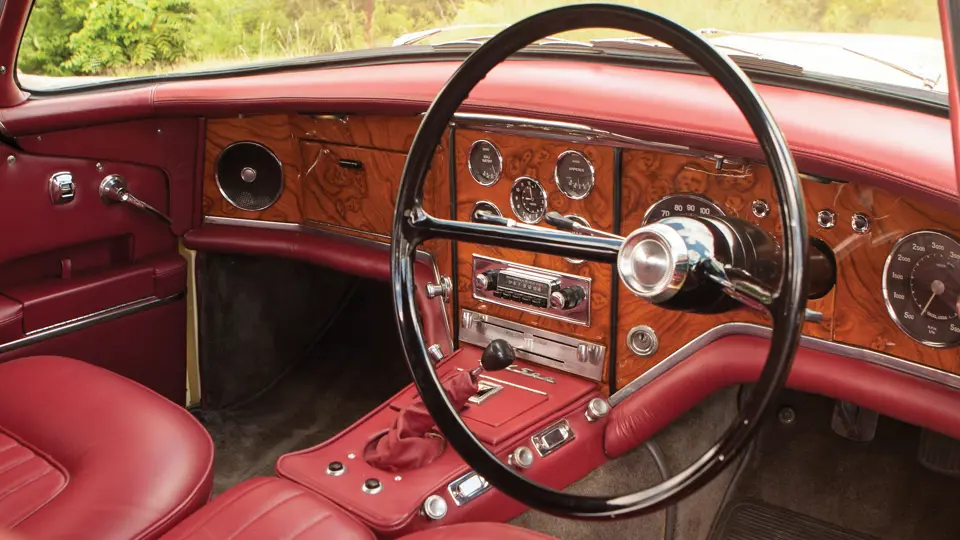


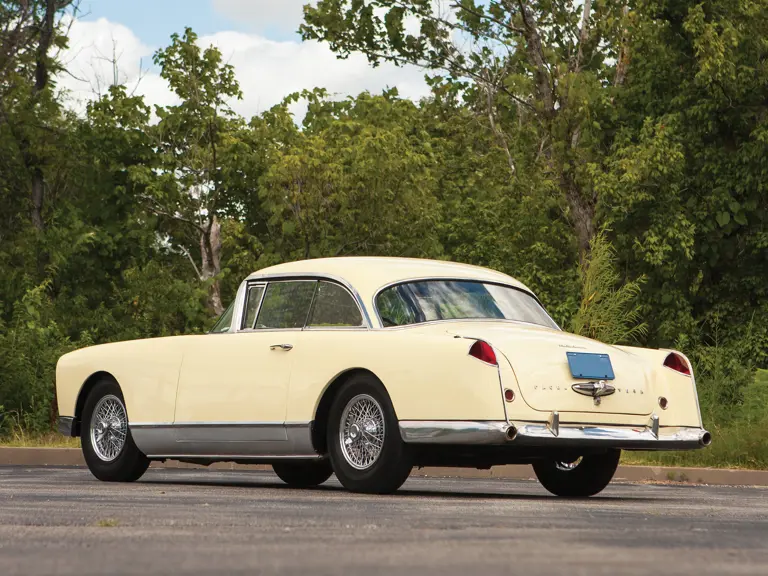
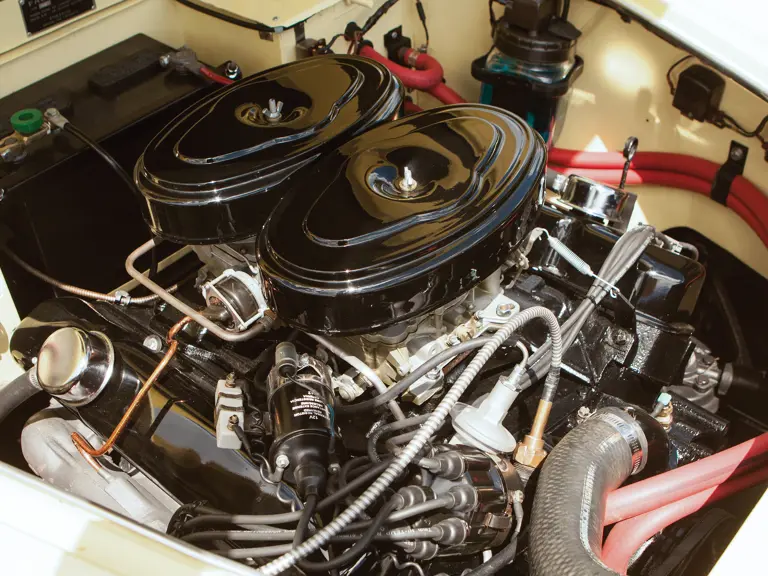
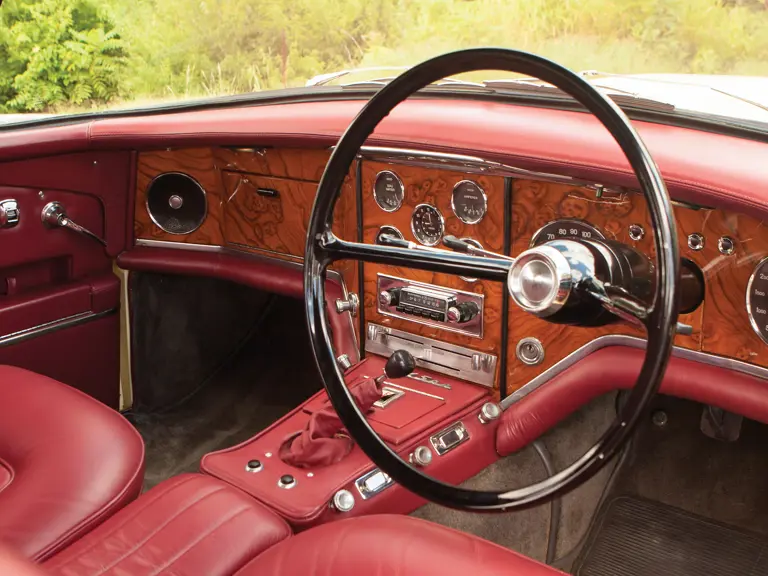
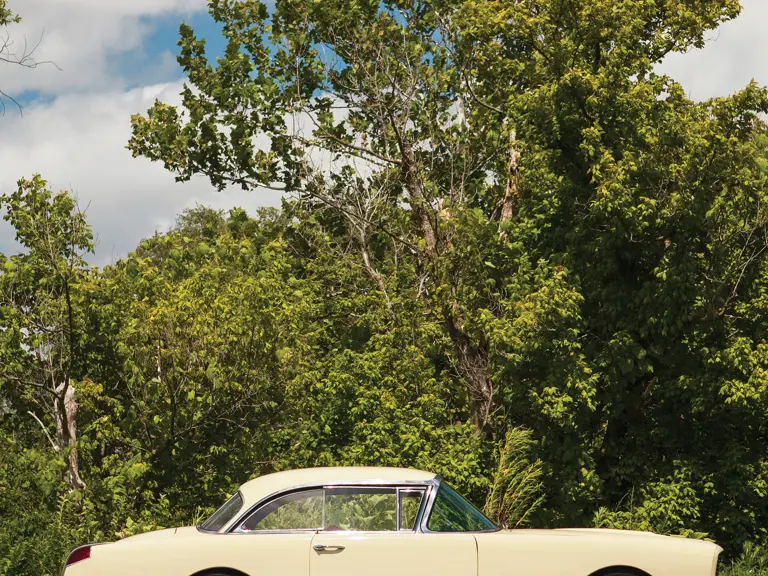

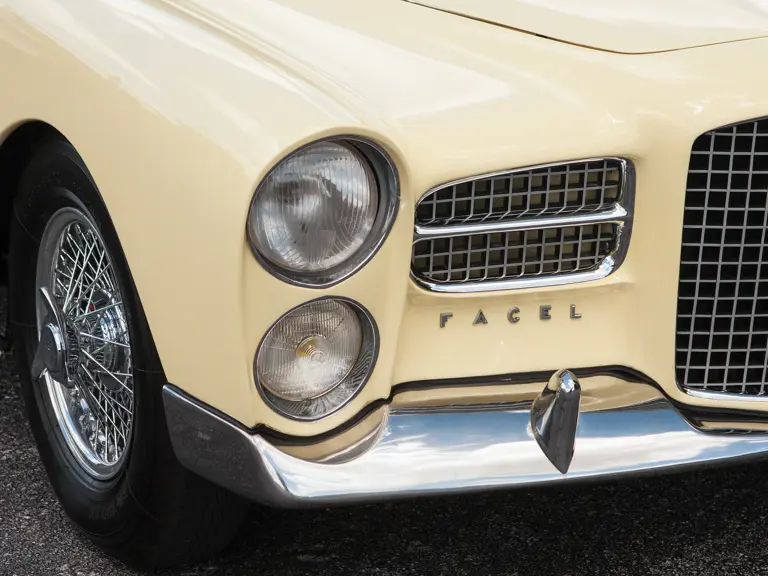
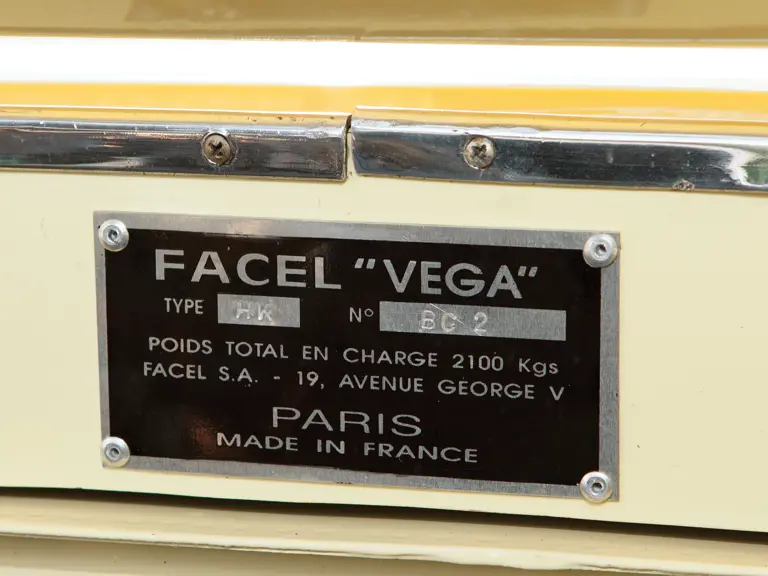
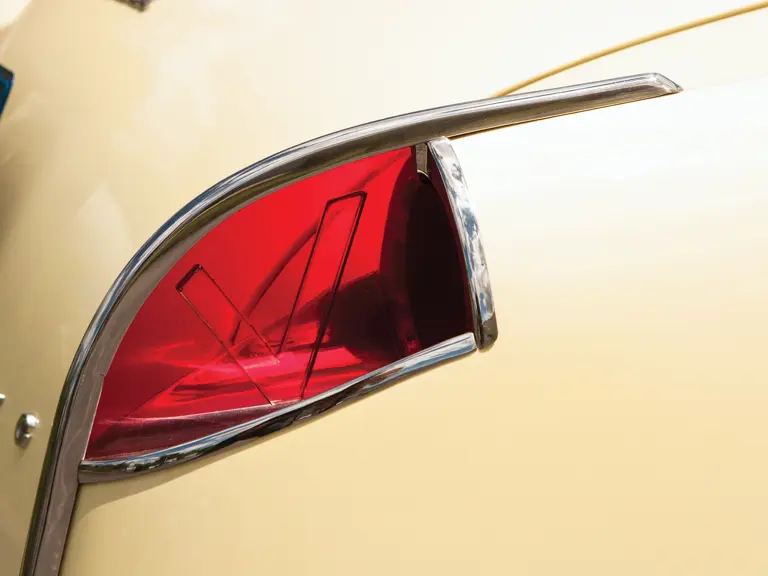



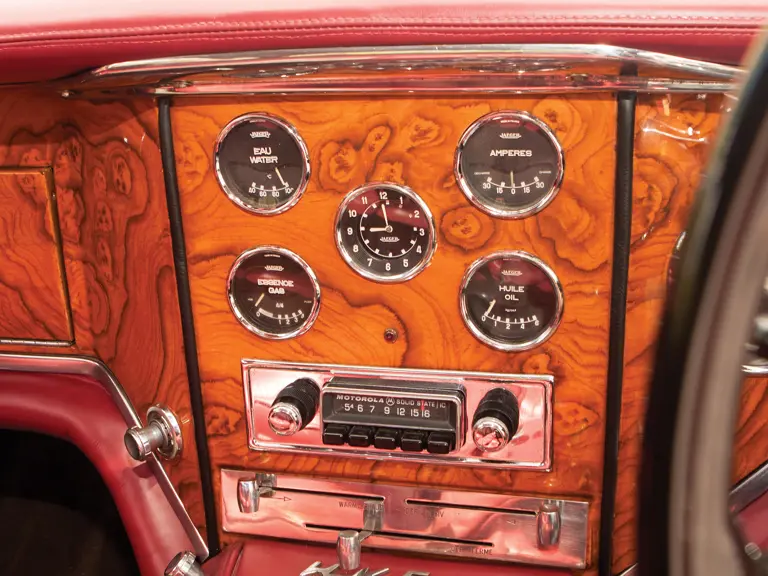
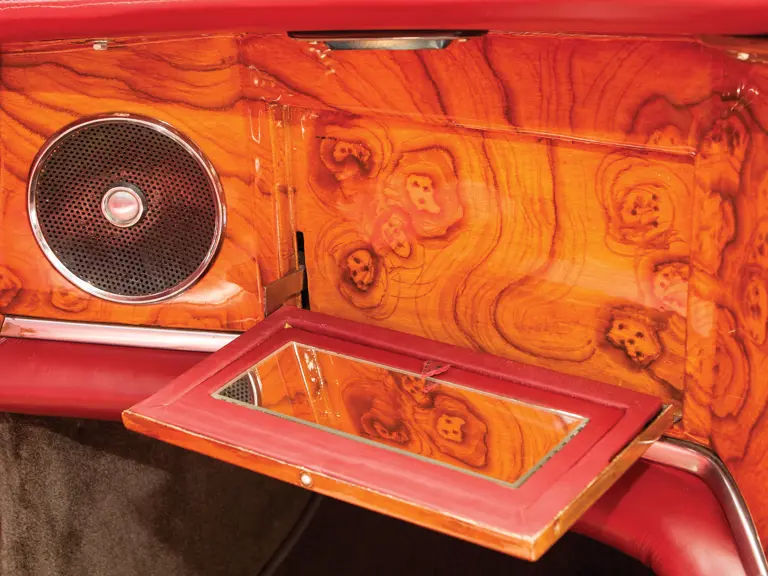
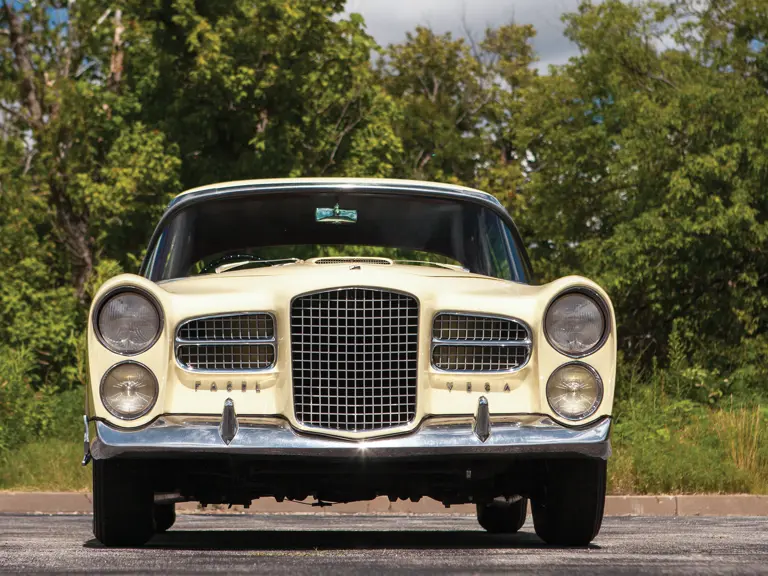

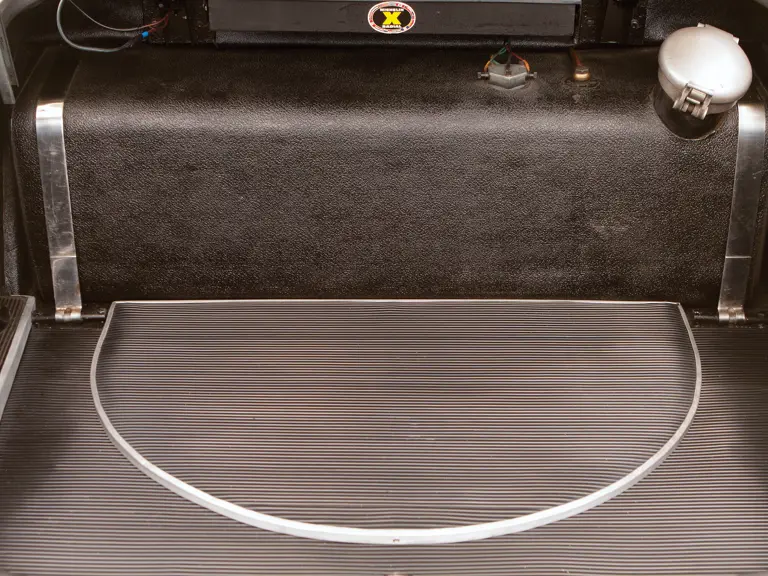

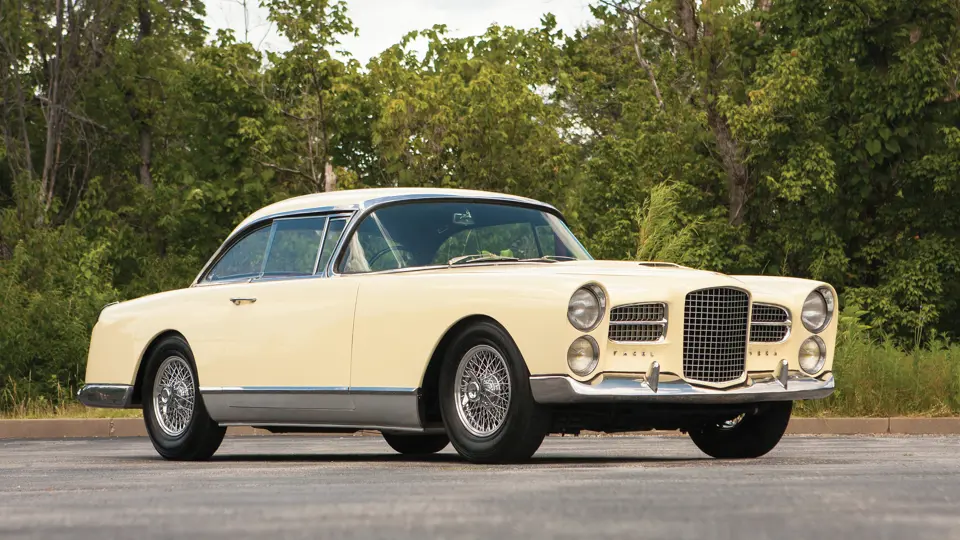
 | London, United Kingdom
| London, United Kingdom
